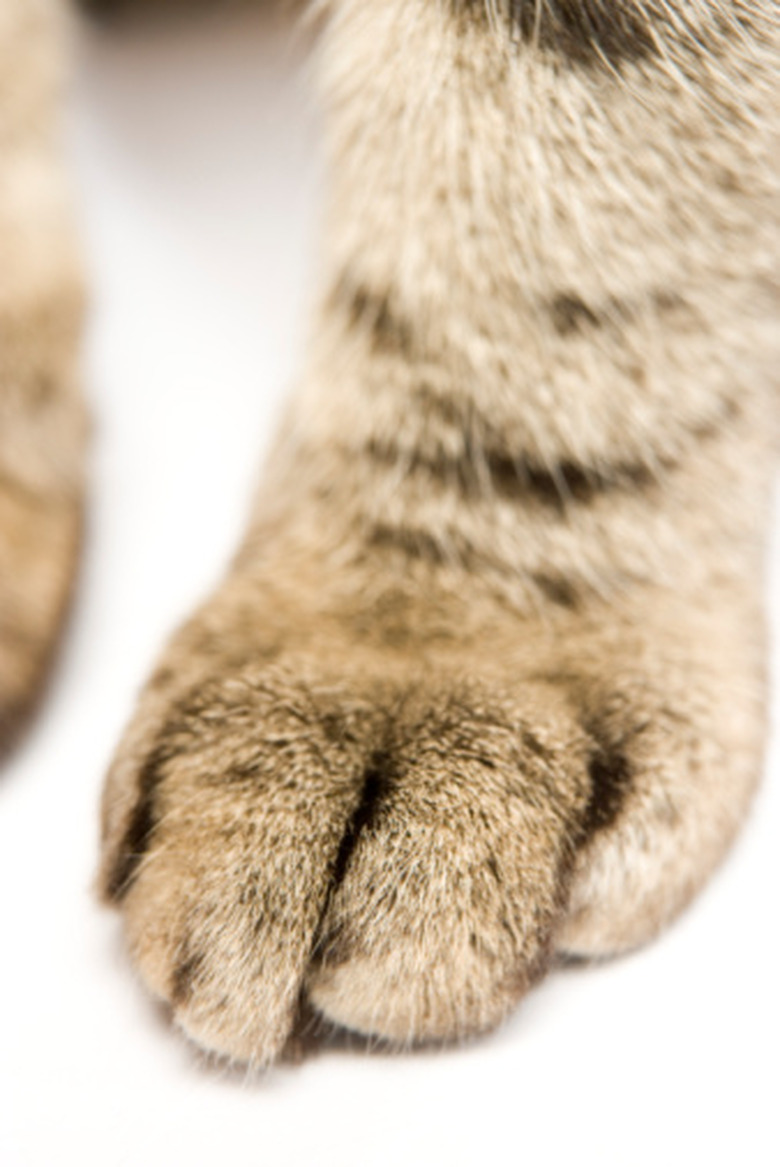What Are The Differences Between Cat & Fox Prints In Snow?
Finding animal tracks in the snow can alert you to what kind of creatures may be visiting your neighborhood. Fox prints are fairly common throughout their natural range, which includes most of North America, even in urban and suburban settings. Cat prints in the snow are also common almost everywhere, particularly in areas with large concentrations of strays. Never interact with wild animals unless you have been specifically trained to do so.
TL;DR (Too Long; Didn't Read)
Cats retract their claws when walking, unlike foxes. The presence or absence of claw marks is a telltale difference.
Fox Tracks
Fox Tracks
Like other members of the canine family, the fox has oval-shaped prints; the tracks are longer than they are wide. They have four equally sized toes on each paw. On each of the four toes, the fox has a claw. These claws show up in tracks, particularly the claws at the top of the two center toes. The back pads of fox paws are triangular and often spread out from the toes. In ideal snow tracks, you will also see the ridge in the heel pad. Foxes "direct register" when they walk, which means they place their hind foot in the track made by their front foot, so you'll only see one set of prints for each side.
Cat Tracks
Cat Tracks
Though they're a different species, cats produce tracks that are similar to fox tracks in a number of ways: Fox paw prints, like a cat's, has four equally sized toes on their front and back paws, they direct register and they're similar in size – about two inches long. A key difference is that cats retract their claws when they're walking to keep them sharp for killing, so claw marks usually will not be visible in cat tracks. The rear pads of cats' paws are not triangle-shaped, as canine paws are, but instead have three round lobes. In addition, members of the cat family produce predominantly round, not oval, tracks that are only slightly wider than they are long.
Tracks in Snow
Tracks in Snow
Different types of snow can yield different track visibility for cats and foxes. Very hard snow, for instance, may register only a slight impression, if any at all. Powdery snow will give poorly defined impressions since the fine snow offers no resistance to the pad of the cat's or fox's paw. Wet or "packing" snow produces the most ideal impression of all snow types. The snow packs together when the cat or fox steps on it, but also gives way for the track to indent into the snow.
More About Tracking
More About Tracking
Noting cat or fox footprints is only one sign for tracking. Other signs of the animals include rubbings, scat and lay marks in the snow. Rubbings are not always for the amateur tracker; they are strands or tufts of hair left on trees or other items in the woods. Foxes' scat deposits are generally small and tapered at one end. Fox lays are impressions in the snow where the fox laid down; you will typically see a few strands of fur or at the least impressions of the fox's coat.
Cite This Article
MLA
Kelly, Jasey. "What Are The Differences Between Cat & Fox Prints In Snow?" sciencing.com, https://www.sciencing.com/differences-cat-fox-prints-snow-8599631/. 22 November 2019.
APA
Kelly, Jasey. (2019, November 22). What Are The Differences Between Cat & Fox Prints In Snow?. sciencing.com. Retrieved from https://www.sciencing.com/differences-cat-fox-prints-snow-8599631/
Chicago
Kelly, Jasey. What Are The Differences Between Cat & Fox Prints In Snow? last modified March 24, 2022. https://www.sciencing.com/differences-cat-fox-prints-snow-8599631/

